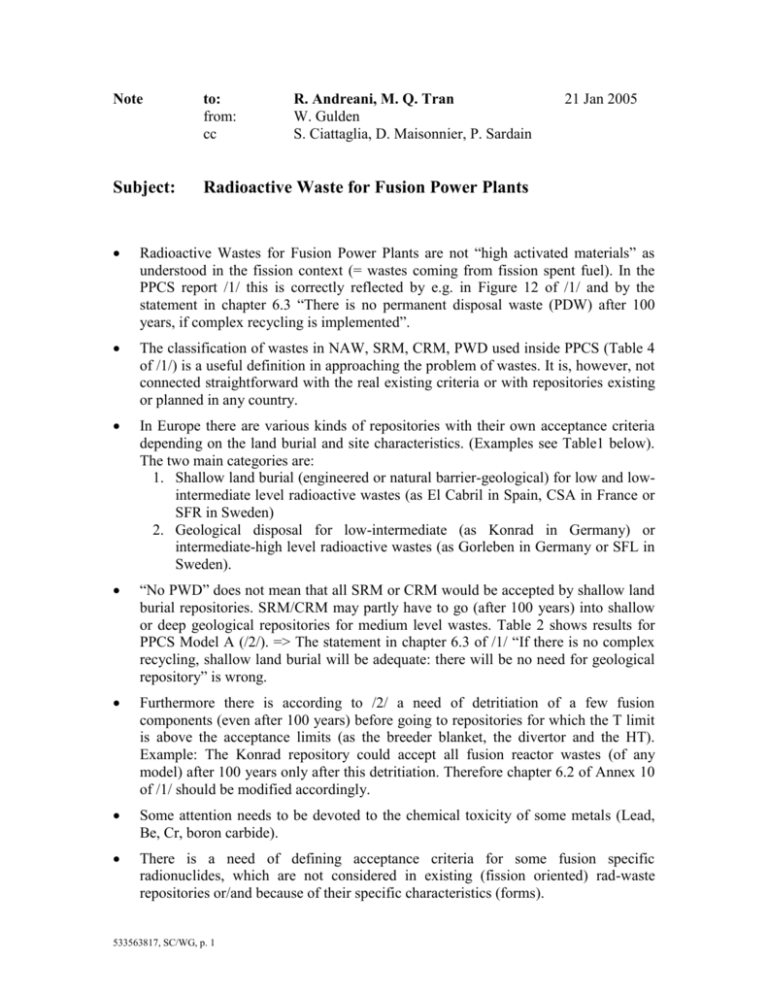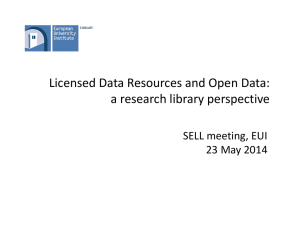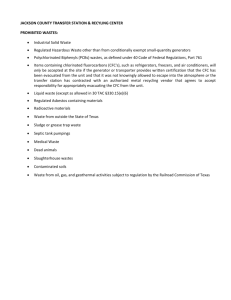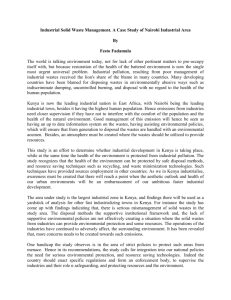Subject: Radioactive Waste for Fusion Power Plants
advertisement

Note to: from: cc R. Andreani, M. Q. Tran W. Gulden S. Ciattaglia, D. Maisonnier, P. Sardain Subject: Radioactive Waste for Fusion Power Plants 21 Jan 2005 Radioactive Wastes for Fusion Power Plants are not “high activated materials” as understood in the fission context (= wastes coming from fission spent fuel). In the PPCS report /1/ this is correctly reflected by e.g. in Figure 12 of /1/ and by the statement in chapter 6.3 “There is no permanent disposal waste (PDW) after 100 years, if complex recycling is implemented”. The classification of wastes in NAW, SRM, CRM, PWD used inside PPCS (Table 4 of /1/) is a useful definition in approaching the problem of wastes. It is, however, not connected straightforward with the real existing criteria or with repositories existing or planned in any country. In Europe there are various kinds of repositories with their own acceptance criteria depending on the land burial and site characteristics. (Examples see Table1 below). The two main categories are: 1. Shallow land burial (engineered or natural barrier-geological) for low and lowintermediate level radioactive wastes (as El Cabril in Spain, CSA in France or SFR in Sweden) 2. Geological disposal for low-intermediate (as Konrad in Germany) or intermediate-high level radioactive wastes (as Gorleben in Germany or SFL in Sweden). “No PWD” does not mean that all SRM or CRM would be accepted by shallow land burial repositories. SRM/CRM may partly have to go (after 100 years) into shallow or deep geological repositories for medium level wastes. Table 2 shows results for PPCS Model A (/2/). => The statement in chapter 6.3 of /1/ “If there is no complex recycling, shallow land burial will be adequate: there will be no need for geological repository” is wrong. Furthermore there is according to /2/ a need of detritiation of a few fusion components (even after 100 years) before going to repositories for which the T limit is above the acceptance limits (as the breeder blanket, the divertor and the HT). Example: The Konrad repository could accept all fusion reactor wastes (of any model) after 100 years only after this detritiation. Therefore chapter 6.2 of Annex 10 of /1/ should be modified accordingly. Some attention needs to be devoted to the chemical toxicity of some metals (Lead, Be, Cr, boron carbide). There is a need of defining acceptance criteria for some fusion specific radionuclides, which are not considered in existing (fission oriented) rad-waste repositories or/and because of their specific characteristics (forms). 533563817, SC/WG, p. 1 Table 1. Characteristics of a few EU waste repositories /2/ Repository Type of waste Kind of Repository El Cabril (Spain) Low and Intermediate Level Low and Intermediate Level Low and Intermediate Level with low heat generation Intermediate and High Level Low and Intermediate Level Shallow engineered T limit Bq/kg 1 E9 Shallow engineered 2 E8 Deep geological 1 E8 CSA (France) Konrad (Germany) Gorleben (Germany) SFR (Sweden) Deep geological Shallow geological 1 E8 Table 2. Masses of the material from the various regions of Model A after 100 years of cooling. Acceptable masses estimated for the different repositories. Category PDW Tonnes CRM Tonnes SRM Tonnes NAW Tonnes Total Tonnes Ref /2/ 0 1,54E4 8,79E4 5,97E4 1,63E5 % of total 0 9 54 37 100 Konrad 0 2,16E4 8,26E4 6,11E4 1,65E5 % of category 0 100 100 100 100 CSA/El Cabril 0 1,11E3 6,16E4 6,11E4 1,24E5 % of category 0 5 75 100 75 SFR 0 0 5,24E4 6,11E4 1,14E5 % of category 0 0 63 100 69 References /1/ /2/ A Conceptual Study of Commercial Fusion Power Plants, Final Report of the European Fusion Power Plant Conceptual Study (PPCS), September 15th, 2004, EFDA-RP-RF-5.0. Karin Brodén and Gunnar Olsson “Categorisation of activated material from PPCS models and acceptability for final disposal”. Draft Final Report, Studvik Radwaste AB, RW-04/16 Rev 1, Oct 2004. 533563817, SC/WG, p. 2







